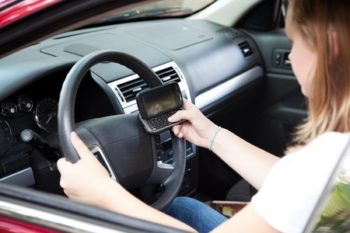
Cell phone records, video footage, photography, and law enforcement or witness testimonies can help prove that a driver was distracted at the time of an accident. Claims against distracted drivers can be successful if victims offer evidence that the negligent driver had his or her attention off the road.
Cell Phone Records
After a collision, pulling the other driver’s cell phone data can help show if he or she was using the phone at the time of the crash. Illinois is one of the states with laws banning handheld cell phone use while driving. Therefore, the driver’s phone records can be strong evidence of negligence.
Eyewitness Testimony
The testimonies of witnesses can serve as powerful proof of the other driver’s distraction. Witnesses can be:
- Passengers in the vehicles involved in the crash
- People in nearby vehicles
- Pedestrians who saw the crash
Video Footage
Traffic camera recordings, video footage from the surveillance cameras of nearby establishments, dash cams, and cell phone videos can help prove the other driver was distracted. The videos may show the other driver plowed into a car without slowing down, whereas an attentive driver would probably break or swerve to prevent a collision. An accident lawyer can help victims obtain video footage from nearby businesses with surveillance systems.
Police Reports
The officers responding to car accidents put together a report containing the initial findings. The report may have evidence that strengthens a compensation claim, for example:
- The other driver’s statement admitting to having been distracted
- The officer’s personal observations suggesting distraction
- Evidence found on the driver’s phone
- Statements from pedestrians, passengers, or other drivers
Photographic Evidence
Taking photographs of a crash scene could play a role in proving that the other driver was engaging in distractions. For example, a phone still in his or her hands or on the next seat with the screen turned on, a bag that has been rummaged through, and signs of applying makeup or eating can help demonstrate the distraction. Photographs of the lack of brake or tire marks could show that the driver never hit the brakes and was too distracted to spot the obstacle.
Admission of Guilt
An at-fault driver may admit guilt immediately after an accident. He or she may apologize for reading a text, answering the phone, or talking to a passenger. Victims should inform accident lawyers of anything that at-fault drivers might have admitted to doing.

